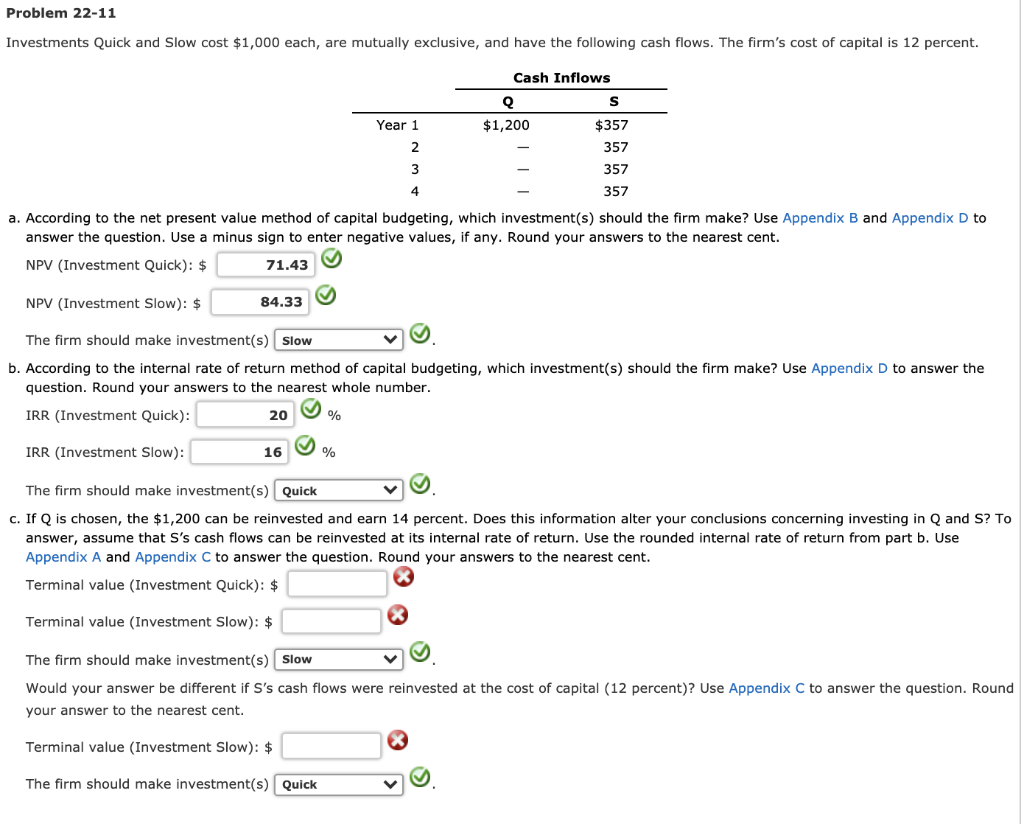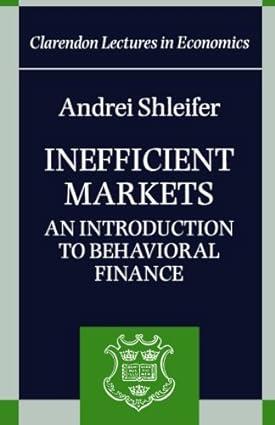
Problem 22-11 Investments Quick and Slow cost $1,000 each, are mutually exclusive, and have the following cash flows. The firm's cost of capital is 12 percent. Cash Inflows S Q $1,200 Year 1 $357 357 2 3 357 357 4 a. According to the net present value method of capital budgeting, which investment(s) should the firm make? Use Appendix B and Appendix D to answer the question. Use a minus sign to enter negative values, if any. Round your answers to the nearest cent. NPV (Investment Quick): $ 71.43 NPV (Investment Slow): $ 84.33 The firm should make investment(s) Slow b. According to the internal rate of return method of capital budgeting, which investment(s) should the firm make? Use Appendix D to answer the question. Round your answers to the nearest whole number. IRR (Investment Quick): 20 % IRR (Investment Slow): 16 % The firm should make investment(s) Quick c. If Q is chosen, the $1,200 can be reinvested and earn 14 percent. Does this information alter your conclusions concerning investing in Q and S? To answer, assume that S's cash flows can be reinvested at its internal rate of return. Use the rounded internal rate of return from part b. Use Appendix A and Appendix C to answer the question. Round your answers to the nearest cent. Terminal value (Investment Quick): $ Terminal value (Investment Slow): $ The firm should make investment(s) Slow Would your answer be different if S's cash flows were reinvested at the cost of capital (12 percent)? Use Appendix C to answer the question. Round your answer to the nearest cent. Terminal value (Investment Slow): $ The firm should make investment(s) Quick Problem 22-11 Investments Quick and Slow cost $1,000 each, are mutually exclusive, and have the following cash flows. The firm's cost of capital is 12 percent. Cash Inflows S Q $1,200 Year 1 $357 357 2 3 357 357 4 a. According to the net present value method of capital budgeting, which investment(s) should the firm make? Use Appendix B and Appendix D to answer the question. Use a minus sign to enter negative values, if any. Round your answers to the nearest cent. NPV (Investment Quick): $ 71.43 NPV (Investment Slow): $ 84.33 The firm should make investment(s) Slow b. According to the internal rate of return method of capital budgeting, which investment(s) should the firm make? Use Appendix D to answer the question. Round your answers to the nearest whole number. IRR (Investment Quick): 20 % IRR (Investment Slow): 16 % The firm should make investment(s) Quick c. If Q is chosen, the $1,200 can be reinvested and earn 14 percent. Does this information alter your conclusions concerning investing in Q and S? To answer, assume that S's cash flows can be reinvested at its internal rate of return. Use the rounded internal rate of return from part b. Use Appendix A and Appendix C to answer the question. Round your answers to the nearest cent. Terminal value (Investment Quick): $ Terminal value (Investment Slow): $ The firm should make investment(s) Slow Would your answer be different if S's cash flows were reinvested at the cost of capital (12 percent)? Use Appendix C to answer the question. Round your answer to the nearest cent. Terminal value (Investment Slow): $ The firm should make investment(s) Quick







